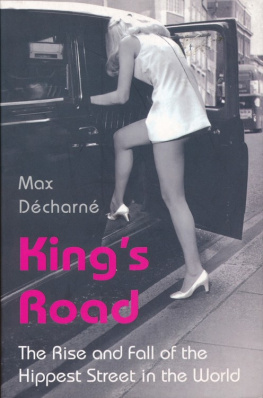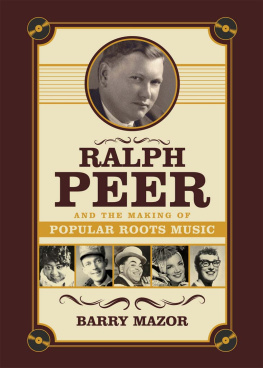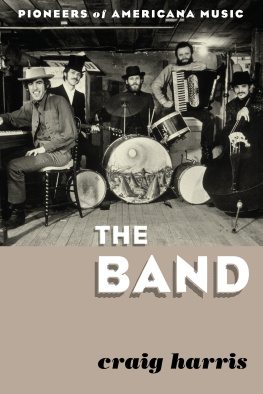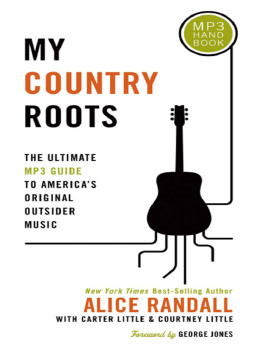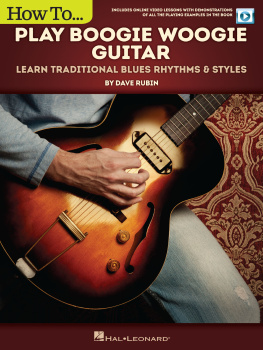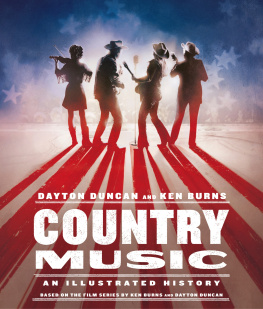Max Dcharn is a writer and musician. His books include Kings Road The Rise & Fall of the Hippest Street in the World, Hardboiled Hollywood The Origins of the Great Crime Films and Straight From the Fridge, Dad A Dictionary of Hipster Slang. A regular contributor to Mojo magazine since 1998, his work has also appeared in the Sunday Times Colour Magazine, the Guardian, TLS and Bizarre, among others.
In his music career, Max has released eleven albums and something in the region of thirty singles since 1989. He played drums with his friend Nikki Sudden before joining Gallon Drunk in 1991, with whom he toured the world. Since 1994 he has been the singer and principal songwriter with The Flaming Stars. He has also recorded nine John Peel Sessions and played shows all across the USA, Canada, Europe and Japan.
The Hipsters Guide to Rockabilly
Max Dcharn

First published in Great Britain in 2010 by
SERPENTS TAIL
an imprint of Profile Books Ltd
3A Exmouth House
Pine Street
London EC1R 0JH
www.serpentstail.com
This eBook edition published in 2010
Copyright Max Dcharn, 2010
The moral right of the author has been asserted.
The characters and events in this book are fictitious. Any similarity to real persons, dead or alive, is coincidental and not intended by the author.
This eBook is copyright material and must not be copied, reproduced, transferred, distributed, leased, licensed or publicly performed or used in any way except as specifically permitted in writing by the publishers, as allowed under the terms and conditions under which it was purchased or as strictly permitted by applicable copyright law. Any unauthorised distribution or use of this text may be a direct infringement of the authors and publishers rights and those responsible may be liable in law accordingly.
A CIP catalogue record for this book is available from the British Library.
eISBN 978 1 84668 241 6
For Nikki Sudden,
who sang the Teenage Boogie on a Saturday night,
and was telling me nearly twenty-five years ago
to write something about Charlie Feathers.
Rest in peace, old friend
Pictures on pages 23, 37, 83, 87, 89, 132, 151, 158 courtesy of Ace Records; pages 57, 97, 105, 181, 216 courtesy of Billy Miller; page 74 courtesy of johnnypowers.com.
All other illustrations and pictures are from the authors collection.
While every effort has been made to contact copyright-holders of illustrations, the author and publishers would be grateful for information about any illustrations where they have been unable to trace them, and would be glad to make amendments in further editions.
CONTENTS
INTRODUCTION
HOLD IT, FELLAS, THAT DONT MOVE ME, LETS GET REAL, REAL GONE FOR A CHANGE
Rockabilly came from the Southern states of America. Im from England, but it always struck a chord with me. In the early seventies I was still at school, growing up near Portsmouth, the dockyard city on the south coast. The place always had a strong Teddy Boy contingent, who could still be seen in those days running the dodgem cars at the funfair down on the seafront the same one that featured in 1973s fifties-era film Thatll Be the Day, which, like the same years American Graffiti, came with its own very useful double soundtrack LP of 1950s material. Fifties nostalgia was in fashion, usually in a family-friendly, watered-down version such as that being peddled on the TV sitcom Happy Days, which was itself inspired by American Graffiti. Books about James Dean seemed to be appearing at a rate of almost one a month, and many of the glam rock bands on British radio had hijacked a sizeable portion of their acts from the original fifties rockers. The word rockabilly was hardly ever mentioned, but if you turned to the back pages of the NME, down among the small ads for hippy clothing, there was always one from a company called Orpheus, based in a concrete brutalist car-park-cum-shopping arcade called the Tricorn Centre, Portsmouth. Orpheus would sell you Teddy Boy drapes, bootlace ties, drainpipe jeans and brothel creepers all of which, in a time of split-knee loons, 30-inch flares and five-inch stack-heel boots, was something of a revelation.

Gene Vincent, 1956
I knew I liked rocknroll, but it wasnt always that easy finding the original recordings when your main record outlet was the local branch of WH Smith. Id been a piano player since the age of four, and a drummer since 1972, when I was twelve. A few months after getting my second-hand drumkit, I bought my first LP, a TV-advertised K-Tel compilation called 25 Rockin & Rollin Greats. Sure, they crammed on far too many tracks a side, but it had Wanda Jackson doing Lets Have A Party, Gene Vincent & the Blue Caps with Be Bop A Lula, Roy Orbisons Oh! Pretty Woman and even Johnny Kidd & the Pirates majestic Shakin All Over. These were all the original cuts, but what I didnt know at the time was that the versions of Carl Perkins Blue Suede Shoes or Bill Haleys Rock Around The Clock were later re-recordings. Still, it had a fair amount of roots rocknroll and even some rockabilly on it, and I would practise my drumming by playing along with both sides of the album.
I probably first heard the word rockabilly on Mott The Hooples single Roll Away the Stone in November 1973, when Ian Hunter sang Theres a rockabilly party on Saturday night during the middle eight, but mostly the phrase rocknroll seemed to cover everything. Hunter was clearly a fan, as was Roy Wood, whose new band Wizzard could be seen regularly on Top of the Pops larking about in a selection of drape jackets, performing fifties-influenced songs like See My Baby Jive (1973) and name-dropping the likes of Dion in their lyrics. In 1974 they went even farther with an album called Introducing Eddy & the Falcons, on which Wood wrote a selection of new songs, each in the style of a different fifties rocker. One of these (I Dun Lotsa Cryin Over You) was a remarkably close facsimile of the Elvis, Scotty & Bill Sun rockabilly sound, although at that stage all the Elvis songs I knew were those on his 40 Greatest double LP which had come out the same year.
An occasional series in the NME at that time, called Junkyard Angels, attempted to hip the readers to rockers from the past, and in June 1974 Roy Carr used the slot to talk at length about Elviss Sun sessions under the headline The Original Greasy Trucker, concluding with a couple of sentences that got right to the point: What I still cant comprehend is why, after all these years, RCA havent collated all the official released Sun tracks onto one volume and released it with all relevant details as a collectors edition. After all, these are perhaps the most important rock records ever made.
Someone out there seems to have been listening, because the following year, the first official LP collection of Elviss Sun material appeared on RCA, with excellent sleeve notes by none other than Roy Carr. There may not yet have been much of a market for such a thing back in the US, but over in Britain it was much appreciated and long overdue. The rockin scene had grown to such an extent in the UK that on 10 April 1976, the
Next page


